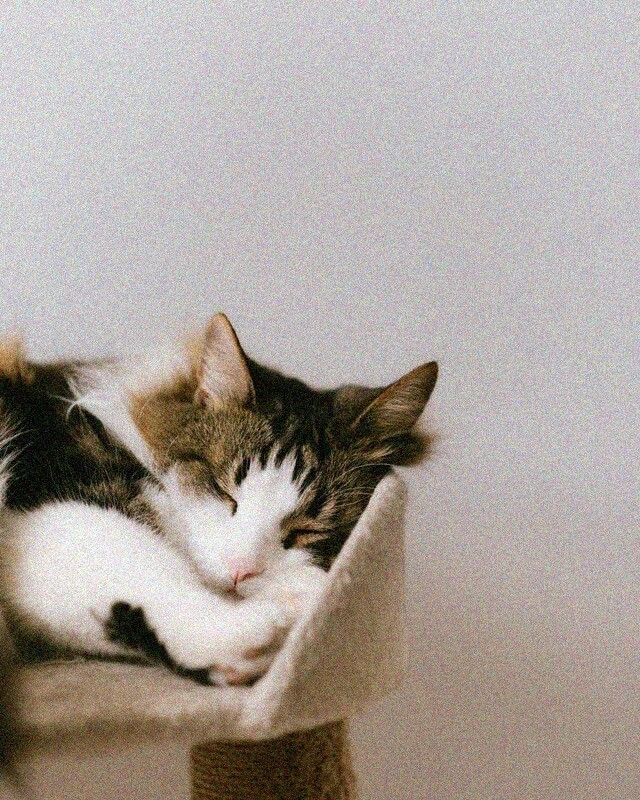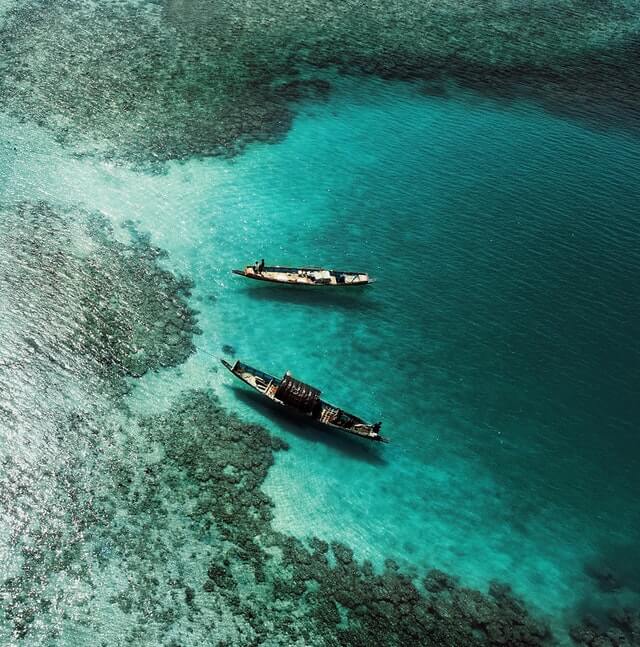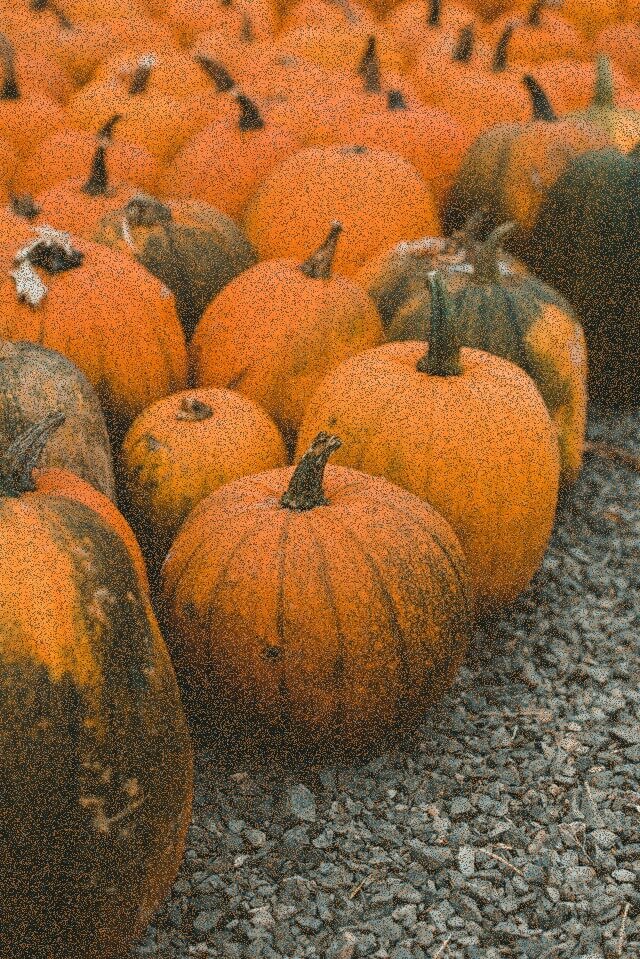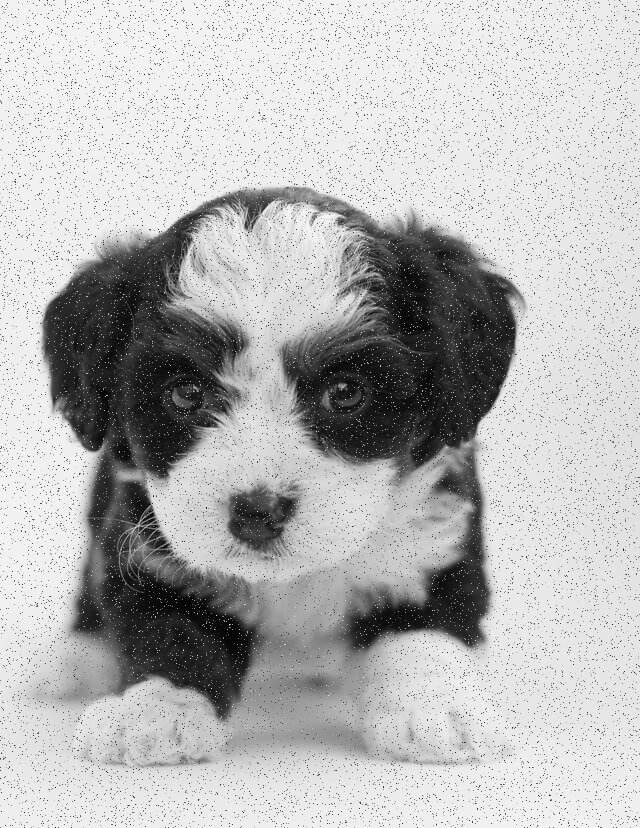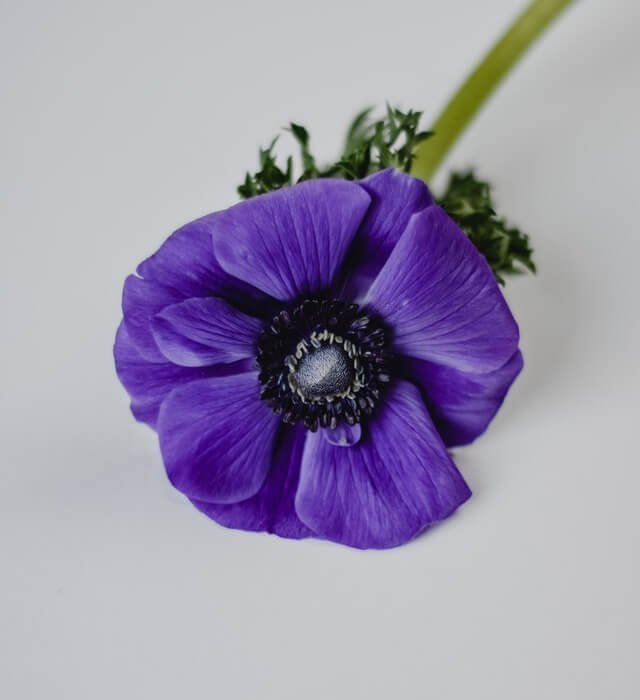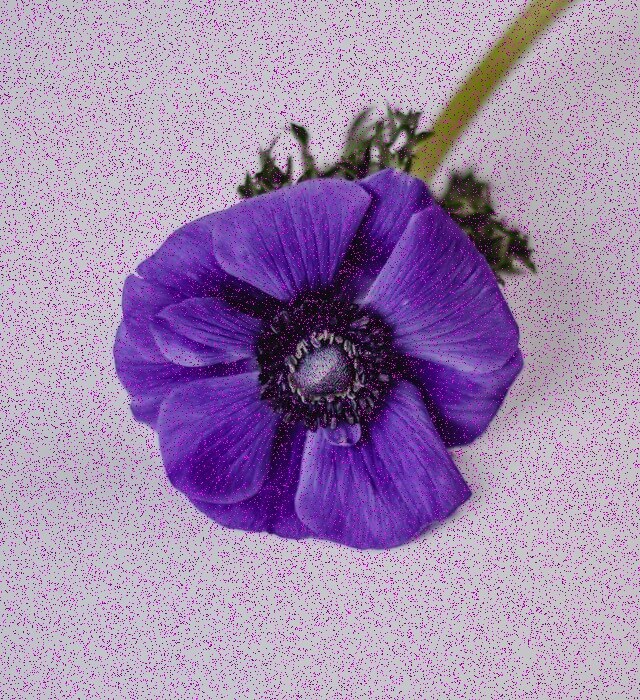This is a simple browser-based utility that creates noisy Joint Photographic Experts Group (JPG/JPEG) pictures. As soon as you paste a JPG/JPEG picture in the input area, the utility will add random pixels throughout the JPG/JPEG, which will make it noisy. You can switch between five types of noise, control the strength/amount of the noise, and make the picture grayscale to add a retro look to it. Created by mad scientists from team Browserling.
This is a simple browser-based utility that creates noisy Joint Photographic Experts Group (JPG/JPEG) pictures. As soon as you paste a JPG/JPEG picture in the input area, the utility will add random pixels throughout the JPG/JPEG, which will make it noisy. You can switch between five types of noise, control the strength/amount of the noise, and make the picture grayscale to add a retro look to it. Created by mad scientists from team Browserling.
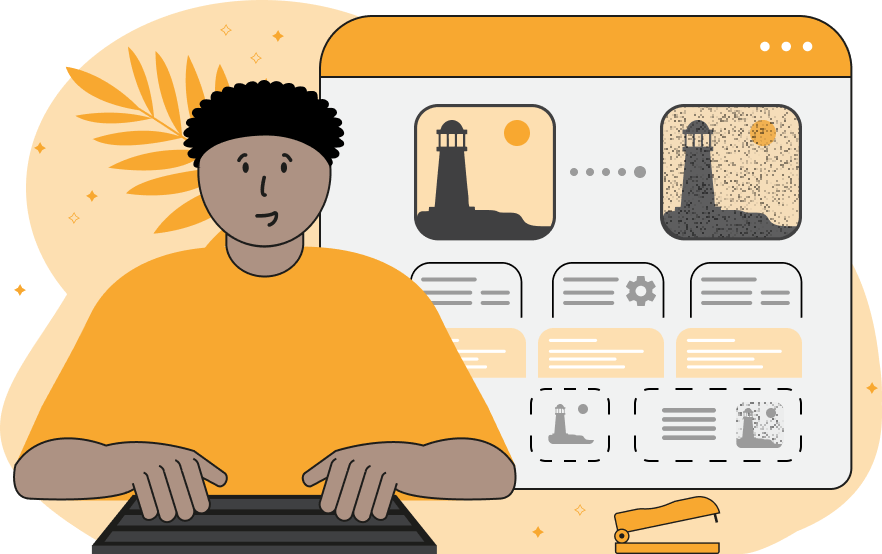
With this online utility, you can add white noise (also known as random noise) to JPG, JPEG, and JPEG2000 graphics files. White noise consists of random pixels that are chaotically distributed around a JPG. The first known digital noise was observed on old photographic films, where, due to defects in the photo matrix, dots of random color and brightness appeared. With this program, you can simulate old cameras and create noisy photos from any JPG file. It offers five types of noise that you can choose from and instantly apply on your files. As soon as noise is applied, you can preview the output JPG and download it with one click. The first type of noise is called "Random Color Noise", and it hits the JPG with a stream of random multicolored RGB pixels, scattering them in random places. The second type of noise is called "Local Color Noise". This mode doesn't use random colors but only those colors that already exist in the current JPG. For example, if the JPG is a photo of the sky, then it will use many variations of the blue color for random pixels. The third type of noise is called "Similar Shade Noise", and it doesn't overwrite pixels with some random new pixels but slightly modifies the existing pixels. That is, it randomly gives current pixels a slightly different shade. For example, a blue pixel might become navy, and a yellow one could become lemon-yellow. The fourth type of noise is called "Monochrome Noise" and it covers the photo with only grayscale pixels that include all shades from white to black. And the last, sixth type of noise is called "Specific Color Noise", and it allows you to create your own color palette for the noise pixels by entering a list of colors. The amount of noise can be controlled in the second block of options. For example, a noise strength of 15% means that each current pixel has a 15% chance of being randomly modified. You can also change the transparency of the noise pixels. For example, they can be half-transparent (alpha equals 50%) or 30% opaque (alpha equals 70%). To add more chaos to the noisy pixels, you can use a range for the alpha channel with the minimum and maximum alpha values. This way, each noise pixel will have different transparency. Additionally, you can convert the output JPG to grayscale in the third block of options. Jpgabulous!
With this online utility, you can add white noise (also known as random noise) to JPG, JPEG, and JPEG2000 graphics files. White noise consists of random pixels that are chaotically distributed around a JPG. The first known digital noise was observed on old photographic films, where, due to defects in the photo matrix, dots of random color and brightness appeared. With this program, you can simulate old cameras and create noisy photos from any JPG file. It offers five types of noise that you can choose from and instantly apply on your files. As soon as noise is applied, you can preview the output JPG and download it with one click. The first type of noise is called "Random Color Noise", and it hits the JPG with a stream of random multicolored RGB pixels, scattering them in random places. The second type of noise is called "Local Color Noise". This mode doesn't use random colors but only those colors that already exist in the current JPG. For example, if the JPG is a photo of the sky, then it will use many variations of the blue color for random pixels. The third type of noise is called "Similar Shade Noise", and it doesn't overwrite pixels with some random new pixels but slightly modifies the existing pixels. That is, it randomly gives current pixels a slightly different shade. For example, a blue pixel might become navy, and a yellow one could become lemon-yellow. The fourth type of noise is called "Monochrome Noise" and it covers the photo with only grayscale pixels that include all shades from white to black. And the last, sixth type of noise is called "Specific Color Noise", and it allows you to create your own color palette for the noise pixels by entering a list of colors. The amount of noise can be controlled in the second block of options. For example, a noise strength of 15% means that each current pixel has a 15% chance of being randomly modified. You can also change the transparency of the noise pixels. For example, they can be half-transparent (alpha equals 50%) or 30% opaque (alpha equals 70%). To add more chaos to the noisy pixels, you can use a range for the alpha channel with the minimum and maximum alpha values. This way, each noise pixel will have different transparency. Additionally, you can convert the output JPG to grayscale in the third block of options. Jpgabulous!
In this example, we add noise to a JPG image of a sleeping cat. We use the "Similar Shade Noise" mode, which changes the current pixel colors to similar color shades. We require that 70% of the pixels must have the noise effect, while the remaining 30% of the pixels will stay unchanged. (Source: Pexels.)
In this example, we randomly add multicolored noise to a JPEG photo of a lagoon with boats. We damage 12% of the pixels in the JPEG and recolor them with random colors from all possible RGB colors. (Source: Pexels.)
This example covers a Halloween theme JPG/JPEG picture with a noise-haze. It uses only those pixel colors that already exist in the JPG/JPEG and modifies 50% of the picture's area. It also lowers the opacity of the noise pixels and sets them to a random alpha value from 50% to 60%. (Source: Pexels.)
In this example, we create a grayscale JPG file and add monochrome noise to it. We set the noise strength to 5% and get an effect of an old grayscale photo of a Maltese puppy. (Source: Pexels.)
In this example, we use the "Specific Color Noise" mode and specify a custom color palette for the noise. We enter two colors in the options – purple and magenta – and add them to the JPG with 10% probability. (Source: Pexels.)
Edit JPG pictures in your browser.
Shift a JPEG to the right or left.
Extract a part of a JPEG picture.
Split a JPG into multiple smaller JPEGs.
Join multiple JPEGs together to create a single image.
Convert a JPEG picture to a smaller preview thumbnail.
Convert a baseline JPEG to an interlaced JPEG.
Convert an interlaced JPG to a baseline JPG.
Create a PDF document from one or more JPG pictures.
Extract PDF pages as JPG pictures.
Create an EPS file from a JPG picture.
Create a JPG picture from an EPS file.
Convert JPEG photos to JPG 2000 photos.
Convert JPEG 2000 images to JPG images.
Convert JPEG images to ICO icons.
Convert ICO icons to JPG images.
Convert JPEG images to TIFF images.
Convert TIFF images to JPG images.
Convert JPG pictures to QOI (Quote OK Image Format) pictures.
Convert QUI pictures to JPG pictures.
Convert JPEG images to PIK images.
Convert a PIK image to a JPG image.
Convert a JPEG image to a PPM image.
Convert a PPM image to a JPG image.
Convert a JPEG image to a BPG image.
Convert a BPG image to a JPG image.
Convert a JPEG image to raw RGB values.
Convert raw RGB values to a JPG image.
Convert a JPG image to raw RGBA values.
Convert raw RGBA values to a JPEG image.
Convert a JPG image to raw ARGB values.
Convert raw ARGB values to a JPEG image.
Convert a JPEG image to raw BGR values.
Convert raw BGR values to a JPG image.
Convert a JPEG image to raw BGRA values.
Convert raw BGRA values to a JPG image.
Convert a JPEG image to raw ABGR values.
Convert raw ABGR values to a JPG image.
Convert a JPEG image to a FLIF image.
Convert a FLIF image to a JPG image.
Convert a JPEG image to an AVIF (AV1) image.
Convert an AVIF (AV1) image to a JPG image.
Convert multiple JPGs to a GIF animation.
Convert multiple JPGs to an APNG animation.
Convert multiple JPGs to a Webp animation.
Create an Excel spreadsheet with colored cells from a JPEG.
Combine two JPG/JPEG pictures together.
Load a JPG slowly pixel-line by pixel-line.
Generate a one-color JPEG of any size.
Randomize bytes in a JPEG and create a glitched JPEG.
Increase the quality of a JPEG picture.
Apply the watercolor effect on a JPG photo.
Convert a JPG to an ASCII art image.
Convert an ASCII drawing into a JPEG drawing.
Convert a JPEG to an ANSI art image.
Convert an ANSI drawing to a JPEG drawing.
Change the filename of a JPG.
Create a mirror copy of a JPG image.
Create convert the given JPG into a symmetric JPG.
Apply a color quantization algorithm on a JPG picture.
Add sound to a JPG picture.
Try to recover a JPG that has been damaged.
Show the hidden metadata (EXIF info) in a JPEG picture.
Add hidden metadata (EXIF info) to a JPEG picture.
Remove the hidden metadata (EXIF info) from a JPEG picture.
Insert a hidden comment in a JPG picture (as EXIF entry).
Find positions of certain pixels in a JPEG.
Replace certain pixels in a JPEG.
Delete certain pixels in a JPEG.
Swap every two pixels in a JPEG row-wise or column-wise.
Swap pixel blocks of any size in JPEG rows or columns.
Add errors to a JPEG and produce a modified picture.
Find differences between two JPG pictures.
View JPEG pictures in your browser.
Subscribe to our updates. We'll let you know when we release new tools, features, and organize online workshops.
Enter your email here
We're Browserling — a friendly and fun cross-browser testing company powered by alien technology. At Browserling we love to make people's lives easier, so we created this collection of online JPG tools. Our tools have the simplest possible user interface that is focused on getting things done. People love our tools and they are now used by millions of people every month. Our JPG tools are actually powered by our web developer tools that we created over the last couple of years. Check them out!

